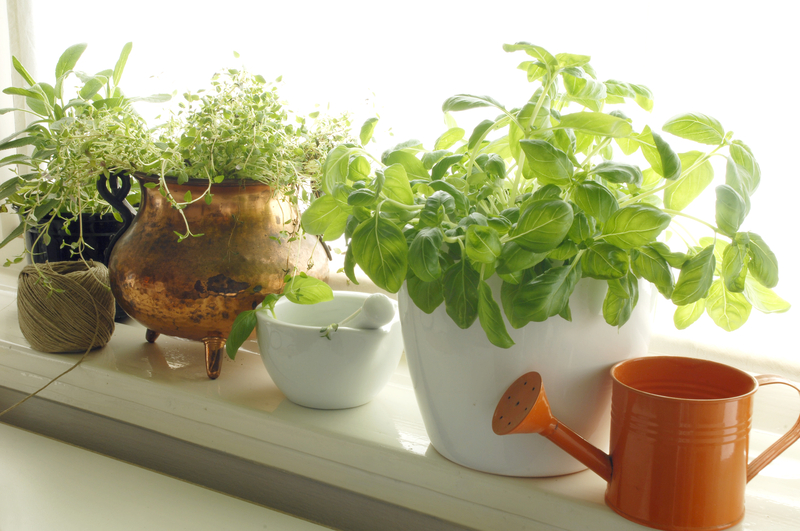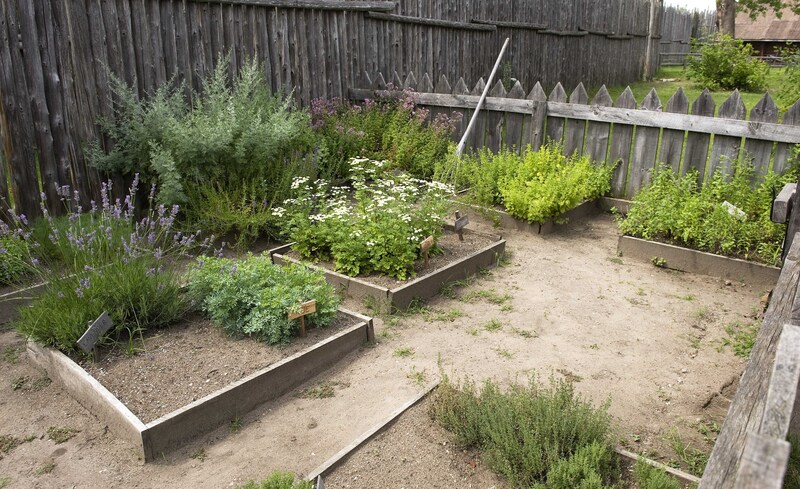Steps to Ensure Your Garden is Both Fun and Safe for Kids
Posted on 28/08/2025
Comprehensive Steps to Ensure Your Garden is Both Fun and Safe for Kids
Your backyard garden can be a haven of exploration, learning, and adventure for your children. However, as you cultivate a space that encourages fun and creativity, you also need to pay attention to garden safety for children. In this article, we present essential steps and actionable tips to transform your garden into a secure paradise where children can safely play, learn, and grow.
Why is Kids' Garden Safety Important?
Every parent or guardian wants to foster a love of nature in their kids. While gardens provide limitless opportunities for play and discovery, they can present hidden dangers if not managed with care. Implementing childproofing strategies in your garden is essential not only for your child's safety but also for your peace of mind.
- Children are naturally curious: They tend to put things in their mouths or climb on unfamiliar objects.
- Unsafe features: Pools, ponds, sharp garden tools, or poisonous plants can pose genuine risks.
- Promotes lifelong healthy habits: A safe and fun garden encourages outdoor play, physical activity, and an interest in nature.

1. Remove or Secure Potential Hazards
Eliminate Toxic Plants
One of the most overlooked garden hazards for kids is toxic plants. Children, especially toddlers, might chew or touch anything within reach. Make sure your garden is free from these common poisonous plants:
- Foxglove
- Nightingale
- Lily of the Valley
- Daffodils (bulbs and flowers)
- Oleander
- Hydrangea
If you're unsure which plants are safe, consult a local horticulturist or check a reliable online database on safe plants for kids' gardens.
Safe Storage for Tools and Chemicals
Sharp tools, fertilizers, and pesticides must be kept in a locked shed or a secure container well out of reach of children. Opt for organic and non-toxic alternatives wherever possible.
- Store all sharp tools: Pruners, shears, and even rakes can hurt little fingers.
- Lock away chemicals: Choose natural pest repellent options and fertilize with compost or manure instead.
- Never leave unused tools scattered in the garden, even for a short time.
Eliminate Trip and Fall Risks
Children love to run and play in the garden, but uneven ground, exposed roots, and garden hoses can cause trips and falls. Level the ground wherever possible, fix or highlight any areas with stairs or sharp level changes, and coil hoses neatly after use.
2. Design Age-Appropriate Play Areas
To combine fun with garden safety for children, create zones for their specific interests and age groups. A well-designed garden provides both freedom and boundaries for safe exploration.
Soft Landscaping
- Grass or Artificial Turf: Provides a cushioned surface for play.
- Mulch or Wood Chips: Ideal for under play structures to soften falls.
- Rubber mats: Excellent beneath swings or slides.
Defined Play Zones
Encourage imaginative play in the garden by installing features such as:
- A sandpit or mud kitchen for sensory play.
- Wooden climbing frames and slides designed for safety.
- A nature corner with logs and stones for bug hunting.
- A vegetable patch where kids can grow their plants under supervision.
Tip: Regularly check all play equipment for signs of wear, splinters, rust, or instability.
3. Consider Water Safety
Water features are mesmerizing for children, but even very shallow water can be a drowning hazard. Always prioritize water safety in kids' gardens.
Secure Pools and Ponds
- Install Fencing: All pools and ponds should be surrounded by a fence at least 1.2 meters (4 feet) high. Gates must have childproof locks.
- Use Safety Covers: Cover small water features with rigid mesh or a secure grille when not in use.
- Remove Temporary Water Sources: Empty buckets, wading pools, or water toys after use.
Never leave children unsupervised near water. Drowning can happen silently and within seconds. If you can't watch, deny access to water features entirely.
4. Install Fencing and Secure Boundaries
Securing access to your garden not only prevents children from wandering out but also keeps unfamiliar animals or strangers out. A well-maintained fence demarcates the play area and provides you with control over children's whereabouts.
- Check for gaps, loose panels, or damaged gates regularly.
- Install self-closing gates with childproof latches.
- Make boundary fencing at least 1.2 meters (4 feet) high to dissuade climbing.
- Use gated trellises or low fences to separate play areas from more delicate or hazardous parts of the garden.
5. Provide Ample Shade and Sun Protection
Gardens are best enjoyed in the sun, but children's skin is sensitive to UV rays. Incorporate shaded areas and sun protection measures into your garden design.
- Grow fast-growing trees or large shrubs to create natural canopies for play zones.
- Install shade sails, gazebos, or pergolas for instant protection from midday rays.
- Make sure sunscreen, hats, and water bottles are always available when playing outdoors.
6. Encourage Insect Safety and Allergen Awareness
Spending time outside exposes children to insects, some of which can sting or provoke allergic reactions. Keep your outdoor play area safe by minimizing risks associated with insects and plant allergens.
- Eliminate standing water to reduce mosquito breeding grounds.
- Check regularly for beehives or wasp nests, especially around play equipment.
- Grow non-allergenic and non-stinging plants, such as marigolds, ferns, or lavender.
- Teach children not to touch or eat unknown plants or bugs.
- Have a first aid kit with antihistamines and instructions for treating bites and stings nearby.
7. Supervise and Educate Your Children
No matter how cautious you are, active adult supervision is the cornerstone of child safety in the garden. Combine vigilance with education to help your children recognize and avoid hazards.
- Always know where your children are when they play outside.
- Teach them to stay within safe garden zones.
- Demonstrate safe handling of plants, insects, and garden equipment.
- Make "safety checks" an engaging part of your garden routine, turning hazard-spotting into a game.
- Involve kids in simple gardening tasks under adult guidance.
8. Design Your Garden for Fun
Once basic garden safety measures for children are in place, maximize fun! Foster your children's creativity, imagination, and curiosity by incorporating features that encourage them to explore, build, and interact with nature.
Kid-Friendly Garden Features
- Miniature garden beds: Assign each child their own spot for growing flowers, veggies, or herbs.
- Nature trails: Use stepping stones, logs, or a winding footpath to encourage discovery.
- Outdoor art corner: Set up a station with washable paints, chalk, or clay.
- Fairy or dinosaur garden: Add whimsical decorations to spark imaginative play.
- Butterfly or bee hotel: Teach kids about pollinators and biodiversity.
- Obstacle course or adventure zone: Encourage balance, strength, and coordination.
Interactive Learning in the Garden
- Plant seeds and tend sprouts together, teaching basics of biology and patience.
- Harvest vegetables and cook simple meals, making healthy eating fun.
- Observe bugs and birds, helping children develop observational and scientific skills.
- Track the seasons and weather, deepening connection with the natural world.
9. Maintain Regular Garden Checks and Upkeep
A kid-safe backyard is never a "set it and forget it" project. As the seasons change and children grow, so do their needs and abilities. Keep your garden a safe, inviting space by making maintenance a family activity.
- Inspect all equipment, boundaries, and surfaces for damage or hazards at least monthly.
- Remove fallen branches, debris, or overgrown shrubs that may create obstacles or hiding places.
- Refresh mulch or soft ground surfaces annually.
- Update your list of safe and unsafe plants as you replant each season.

10. Prepare for Emergencies
Despite all precautions, accidents can happen. Prepare for emergencies by creating a quick response plan:
- Keep a first aid kit in a readily accessible location near the garden.
- Teach children basic first aid, such as washing wounds and applying plasters.
- Display important emergency numbers, such as poison control and local ambulance services.
- Train family members on what to do in the event of serious injury, allergic reaction, or near-drowning.
Conclusion: Balance Fun and Safety in Your Children's Garden
Creating a garden where kids can play safely and joyfully is deeply rewarding. The key steps include removing hazards, setting up safe play areas, ensuring water safety, installing secure boundaries, providing shade, minimizing insect risks, supervising and educating children, designing for fun, maintaining the space, and being prepared for emergencies.
By following these crucial steps to ensure your garden is both fun and safe for kids, you not only protect your children from avoidable accidents but also foster their love of the outdoors. Involve your children at every stage, from planning to planting, and your garden will remain a cherished, safe, and stimulating space as they grow.
Ready to revamp your backyard? Start today--create a family-friendly garden sanctuary that blossoms with laughter, learning, and lifelong memories!
```
